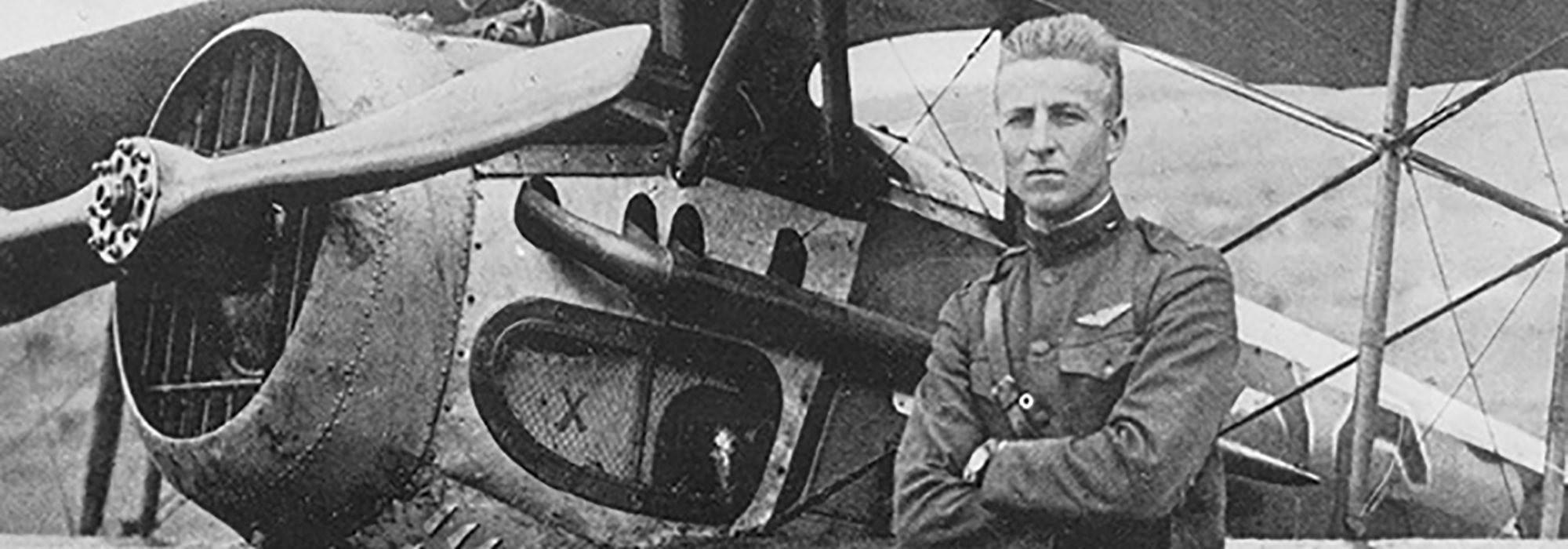The name “Frank Luke” has been bestowed on not one, but two air bases. No other American airman can claim that distinction.
Ford Island AS, Hawaii, became Luke Field in 1919. In 1941 the Army shifted the name to a new base (today’s Luke Air Force Base) in Arizona.
Luke’s home state pushed to acquire the name. It’s easy to see why; Luke was a huge war hero, and that wasn’t the half of it.
Arizona was still a territory when Frank Luke, Jr., was born in Phoenix in 1897. He did well in school, but he was outstanding in sports. His specialty was bare-knuckle prize fighting.
Luke was a self-confident, brash, and impulsive young man. When the US entered World War I in April 1917, he saw his chance for fame and quickly joined the Army’s Aviation Section.
Flight training in Texas and California revealed Luke to be a superior pilot. By March 1918, Second Lieutenant Luke had his wings and commission and had left for France, itching for combat.
Luke was assigned to the 27th Aero Squadron, part of the Army’s 1st Pursuit Group. The 27th had just shifted to the powerful French Spad XIII, and Luke took full advantage of that weapon.
He secured his place in history almost overnight. Over a mere 18 days (Sept. 12 through Sept. 29, 1918), Luke shot down 18 German aircraft—four fixed-wing types and 14 observation balloons.
The latter were among the war’s most dangerous air targets, all ringed with anti-aircraft cannons, machine guns, and small arms of ground troops. Balloons themselves were hard to set afire.
On Sept. 18, Luke scored five victories in 10 minutes—a phenomenal achievement for the 21-year-old warrior.
Luke was a fearless aviator, often hunting alone and against long odds. That he lacked discipline is not in doubt; he infuriated his commander. He was redeemed by his bare-knuckle combat style.
Young Luke, at the end of his 18-day spree, was America’s most famous combat pilot and its top ace. He was far ahead of even Capt. Edward V. Rickenbacker, one of his few friends.
Luke’s quest for glory ended Sept. 29, 1918. Taking off alone from Verdun, he sneaked in undetected behind a German balloon unit. In under 10 minutes, he had scored three victories.
Then, Luke was himself raked by German anti-aircraft fire. He managed to land near Murvaux and flee, but he soon collapsed and succumbed to wounds sustained during his flight.
Luke was the first US aviator to receive the Medal of Honor, awarded posthumously. Luke’s 18 kills left him second to Rickenbacker’s eventual 26.
Rickenbacker himself called Luke “the most daring aviator and greatest fighter pilot of the entire war.”
Luke’s 18 kills left him second to Rickenbacker’s eventual 26. Rickenbacker himself called Luke “the most daring aviator and greatest fighter pilot of the entire war.”Air Force Magazine staff writer
Today, Luke Air Force Base rates as a major element of Air Education and Training Command. The host 56th Fighter Wing produces trained pilots for the F-16 and F-35 fighters. An integral part of Luke’s fighter training is the Barry M. Goldwater Air Force Range, which comprises 1.9 million acres of the Sonoran Desert between Yuma and Tucson. At the Connecticut-sized range, pilots practice air-to-air maneuvers and attacks on ground targets.

FRANK LUKE
Born: May 9, 1897, Phoenix, Arizona Territory
Died: Sept. 29, 1918 (KIA) near Murvaux, France
Nickname: Arizona Balloon Buster
Education: Phoenix Union High School
Occupation: US military officer
Services: US Army—Signal Corps, Air Service
Main Era: World War I
Years of Service: 1917-18
Combat: Western Front, Europe 1918
Final Grade: Second lieutenant (posthumously promoted to First Lieutenant)
Honors: Medal of Honor, Distinguished Service Cross (2), Croce al Merito di Guerra (all awarded posthumously)
Famous Friend: Eddie Rickenbacker

LUKE AIR FORCE BASE
State: Arizona
Nearest City: Glendale
Area: Main base 6.6 sq mi / 4,198 acres; Barry M. Goldwater Air Force Range 2,969 sq m / 1.9 million acres
Status: Open, operational
Opened as Litchfield Park Air Base: Feb. 15, 1941
Renamed Luke Field: June 6, 1941
Inactivated: Oct. 31, 1946
Reactivated: Jan. 1, 1951
Renamed Luke Air Force Base: June 10, 1949
Current owner: Air Education and Training Command
Former owners: West Coast Air Corps Training Center; Air Corps Flying Training Command; AAF Flying Training Command; AAF Training Command; Air Training Command; Tactical Air Command; Air Combat Command

